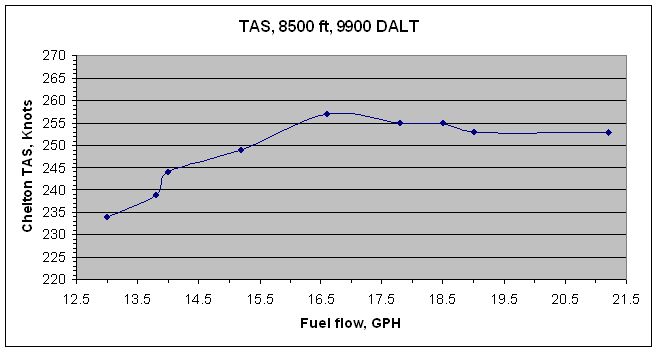Now that summer is well established Down Under, I was able
to conduct some more flight testing. The air is smooth, winds gentle, and
the bugs have largely abated so the wings don’t get heavily peppered
during departure and arrival.
Recall that I have been fanatic about reducing parasitic
drag on my Lancair IV, primarily cooling drag, but everywhere else where I
thought some benefit could be gained. I have been doing this mostly for
the challenge, but also to see if I could get my IO-550-powered Lancair IV to
cruise at Legacy speeds which are factory-advertised at 240 knots, although I
know that the Reno hot rods go a LOT faster.
After an extra thousand hours or so of drag reduction work
and fine tuning, I think I have succeeded.
I scrubbed all the bugs off, wiped the dust off the wings, refuelled,
and went flying with a buddy. With 420 pounds of pork and 90 gallons of
fuel our departure weight was 2934 pounds. We picked up only a few new bugs
on the way up to 8500 feet. The density altitude was 9900 feet
(ISA+20).
The test protocol was simple: set wide open throttle and
maximum RPM and then progressively lean the mixture to find the best power
point. This yields 80% power, more or less, which is the maximum
allowable cruise setting for the IO-550N per the Columbia operating manual.
To squeeze every bit of speed out of the airplane, we closed
all the air vents, the cowl flaps, and the oil cooler door. I leaned progressively
and recorded data off the Chelton MFD and engine monitor. Recall that I
have carefully calibrated the pitot-static system so that at in the region of
220 knots IAS the airspeed error is about one knot, the same as the resolution
of the Chelton display.
Here is the data I recorded, and below it a plot of TAS vs
fuel flow. At the fuel flow of 15.2 GPH the EGT was nominally 50F lean of
peak. From this point I reduced power by reducing RPM until I got down to
2450 which Gary Burns advised me is the RPM of best volumetric efficiency for
the IO-550. Note that the percent power is the figure I read off the MVP-50
engine monitor, and it is only approximate because engine monitors do not
correct for mixture changes very well. The maximum CHT was about 330F,
and decreased as I went lean of peak. Oil temperature levelled out about
200F. The data table is shown below.
|
Fuel Flow
|
TAS
|
RPM
|
MP
|
%power
|
|
|
21.2
|
253
|
2680
|
23
|
|
|
|
19
|
253
|
|
|
|
|
|
18.5
|
255
|
|
|
|
|
|
17.8
|
255
|
|
|
|
|
|
16.6
|
257
|
|
|
|
|
|
15.2
|
249
|
2670
|
22.9
|
77
|
50F LOP
|
|
14
|
244
|
2600
|
|
73
|
|
|
13.8
|
239
|
2500
|
|
70
|
|
|
13
|
234
|
2450
|
|
68
|
|
When TAS is plotted vs. fuel flow, the result is shown
below. Note that the Chelton corrects for both aerodynamic heating
and compressibility effects which would otherwise lead to an erroneously high calculation
of TAS.

I need to do some confirmation testing to see if the data
points are reasonably repeatable, but I think I can claim 255 knots/293
MPH. J
Now I need to do some more tweaking to see if I can get 300
MPH. The next step is to reduce the cooling air exit area because
the engine runs a bit too cool even with the cowl flaps fully closed. Then
I will start tweaking with exhaust pipe nozzles.
Stay tuned.
Fanatic Fred